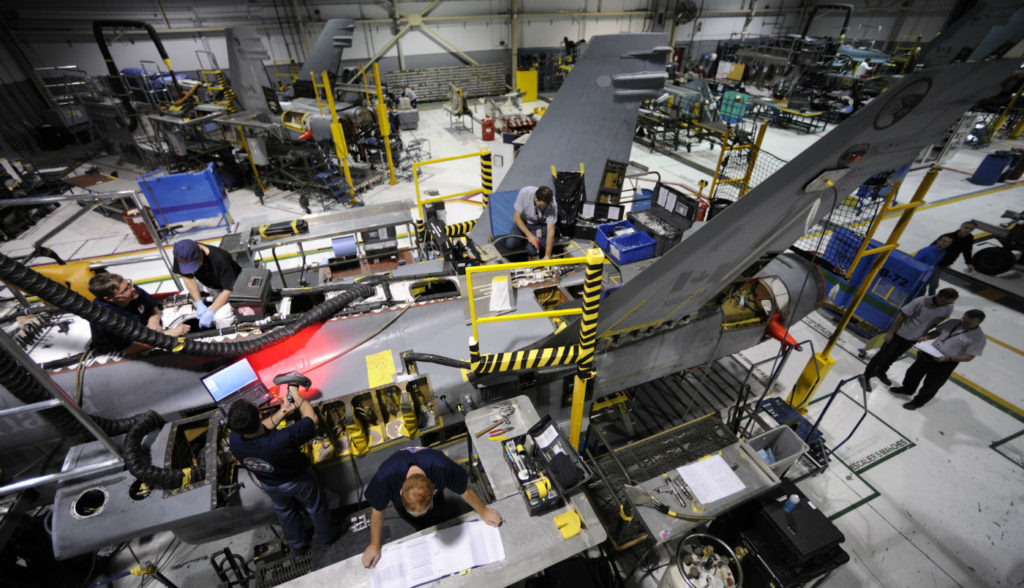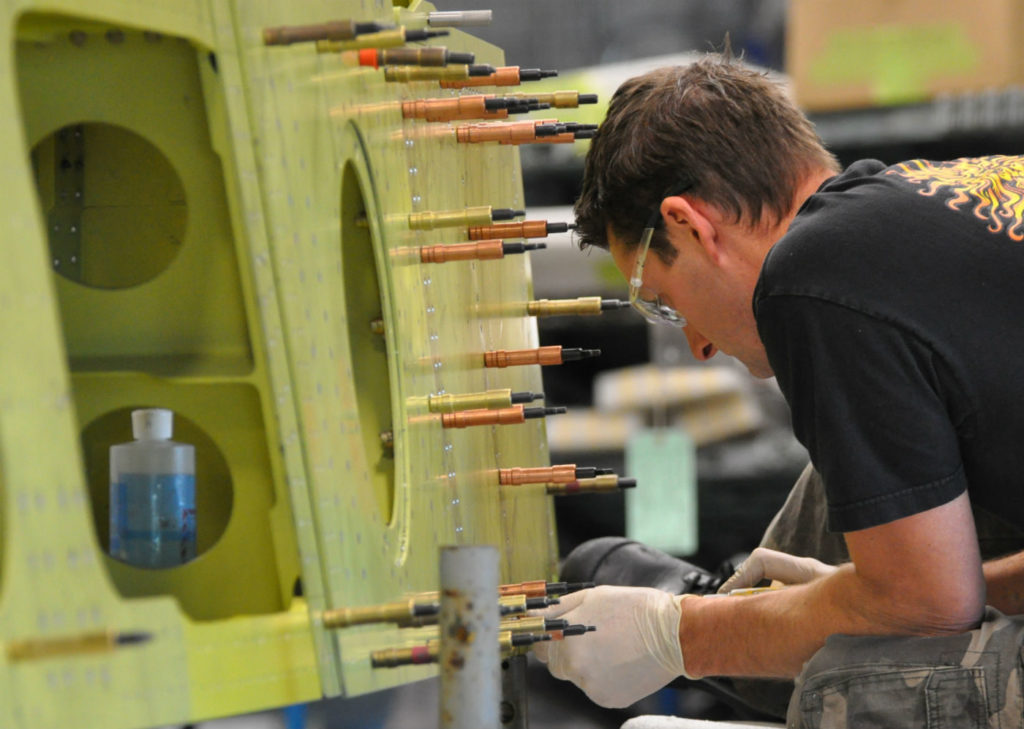Estimated reading time 10 minutes, 7 seconds.
Before Canada launches an open competition to select a permanent replacement for its fleet of CF-188 Hornets, the government must determine the quality and quantity of long-term maintenance it wants performed in Canada, say several companies likely to contend for in-service support (ISS) contracts.

Will the Crown acquire the intellectual property (IP) to modify the aircraft, or will it rely on the aircraft manufacturer to perform all deep maintenance at designated depots outside of Canada and provide domestic suppliers with basic work packages?
L3 MAS has been maintaining the CF-188 fleet since the fighter jets were first acquired in 1980, but officials with the Mirabel, Que.-based company worry that unless access to the intellectual property of the future fighter is secured up front, it could mean the end to highly skilled structural and software engineering jobs that have kept the fleet of legacy Hornets flying for over 30 years.
“Everybody is focused on the operational capability of the future aircraft,” Jacques Comtois, vice-president and general manager, told Skies in a recent interview. “They are not [asking], once we get the aircraft we are going to have to maintain for at least 40 years, . . . are we going to be sovereign over that maintenance? Or are we just going to say to [the manufacturer], ‘Do what you have to do and then give us back the aircraft when you can?'”
At the crux of his concern is whether Lockheed Martin will allow IP access to the millions of lines of code and other technologies that make up the fifth-generation F-35 Lightning II Joint Strike Fighter. While other likely contenders in a competition, including Boeing, Dassault and Eurofighter, have indicated a willingness to transfer technology as part of their value propositions, Lockheed Martin has said it would like L3 MAS as a partner, “but the model is different,” said Comtois.
And that could mean significant changes for a company that has developed a global reputation for keeping legacy Hornets and other older aircraft such as the CT-114 Tutor flying well beyond the end of their expected service lives. Without access to the technology behind the new fighters or, at the very least, the creation of a Canadian maintenance depot for those fleets, L3 MAS and its suppliers could lose the ability to perform profitable and rewarding work.
“The big question that needs to be debated before the decision is made is what do you want in Canada?” said Comtois. “If you just want the best aircraft at the cheapest price, be clear about it. But realize that you might not have an [ISS] industry anymore in the way it is today. Canada needs to be smart. If the government doesn’t put those requirements on paper and negotiate them beforehand, everyone will do what is best for themselves.”

CAE, a subcontractor to L3 MAS for upgrades to the CF-188 mission systems, including much of the software engineering, echoed those concerns.
“If you put restrictions around access to the data rights for any of the IP that pertains to aircraft systems or key capabilities on a platform, then it becomes extremely difficult for any indigenous Canadian business to participate and provide the kind of value we believe the industrial base should have the opportunity to provide,” said Joe Armstrong, vice-president and general manager.
In-service support was one of six key industrial capabilities (KICs) identified in Tom Jenkins’ 2013 report recommending Canada leverage defence procurement through KICs. The report provided the basis for the Conservative government’s subsequent Defence Procurement Strategy, many elements of which remain in effect today.
“In defence-related industries the main currency for innovation is intellectual property. Development of IP, or access to it through technology transfer, is key to success,” wrote Jenkins. “Canadian firms’ access to the higher end of the ISS market therefore heavily depends on contracting terms and conditions established at the front end of each major acquisition, given that these terms determine whether, and on what conditions, Canadian ISS providers will have access to the required IP.”
Navdeep Bains, Minister of Innovation, Science and Economic Development, recently reaffirmed the importance of ISS, telling a Montreal defence seminar in early April that the value proposition requirements for the newly acquired fixed-wing search and rescue aircraft were purposely structured to “ensure the aircraft would be maintained in Canada by Canadians.”
Still, Comtois worries that with government and military resources dedicated to the possible purchase of an interim fleet of Boeing F/A-18 Super Hornets, little discussion is taking place around the longer future fighter ISS requirements.
“You can’t say, [ISS] is a KIC we want to keep in Canada because we want to be sovereign over our fleets, and then on the other hand say to the OEMs [original equipment manufacturers], ‘You can keep all of that information . . . you can just give us the manual.’ That is not ISS in terms of adding value, it is ISS from the point of view of an aircraft mechanic. If you want to control the destiny of your fleet, you need to have a [significant] role to play, not just implementing work packages.
“If the debate takes place, we will respect the decision, but I’m afraid that debate won’t even take place,” he said.

As Skies reported in January, when Canada originally acquired the Hornets in 1980, it was done as a direct commercial military sale with McDonnell Douglas and included rights to the associated IP. Thirty-seven years later, L3 MAS has detailed maintenance data on every one of the 76 tail numbers in the CF-188 fleet. With a team of 150 engineers dedicated to the Hornet program, it has been able to modify the structure and other aspects of the aircraft to ensure the fleet will remain in service beyond 2025.
That expertise has attracted similar work from Australia, Spain, Finland, Switzerland and the U.S. Navy. In fact, when Skies spoke with Comtois, the shop floor contained four Canadian Hornets and six U.S. Navy aircraft.
Paul Mercier, L3 MAS vice-president for programs, told the Montreal defence seminar that maintaining the Canadian fleet has meant over $3.7 billion in revenue over the past 30 years, as well as $675 in export opportunities to other fleets. That level of complex program management has also led to work on a range of other aircraft, including the Tutors, the CC-150 Polaris tankers, the CH-147F Chinook helicopters, unmanned aircraft, special mission aircraft, and commercial planes.
“The creation of our division, which was for the CF-188, allowed us to get $7.8 billion of opportunities, of which 80 per cent are currently under contract,” he said.
“Intellectual property is a key enabler for Canadian industry. It creates a large difference between having a very small group of people to support an aircraft without modifying it, or increasing the engineering content to be able to modify the platform,” he added
Armstrong noted CAE’s support to the CF-188 fleet has “kept about 200 people employed for three decades, specifically working on the IP-related operational flight program and the mission packages that are on that aircraft. As soon as you say Canada doesn’t have the right to access the IP related to those systems, you can imagine what happens to the future possibility of being able to deliver that kind of work.”








